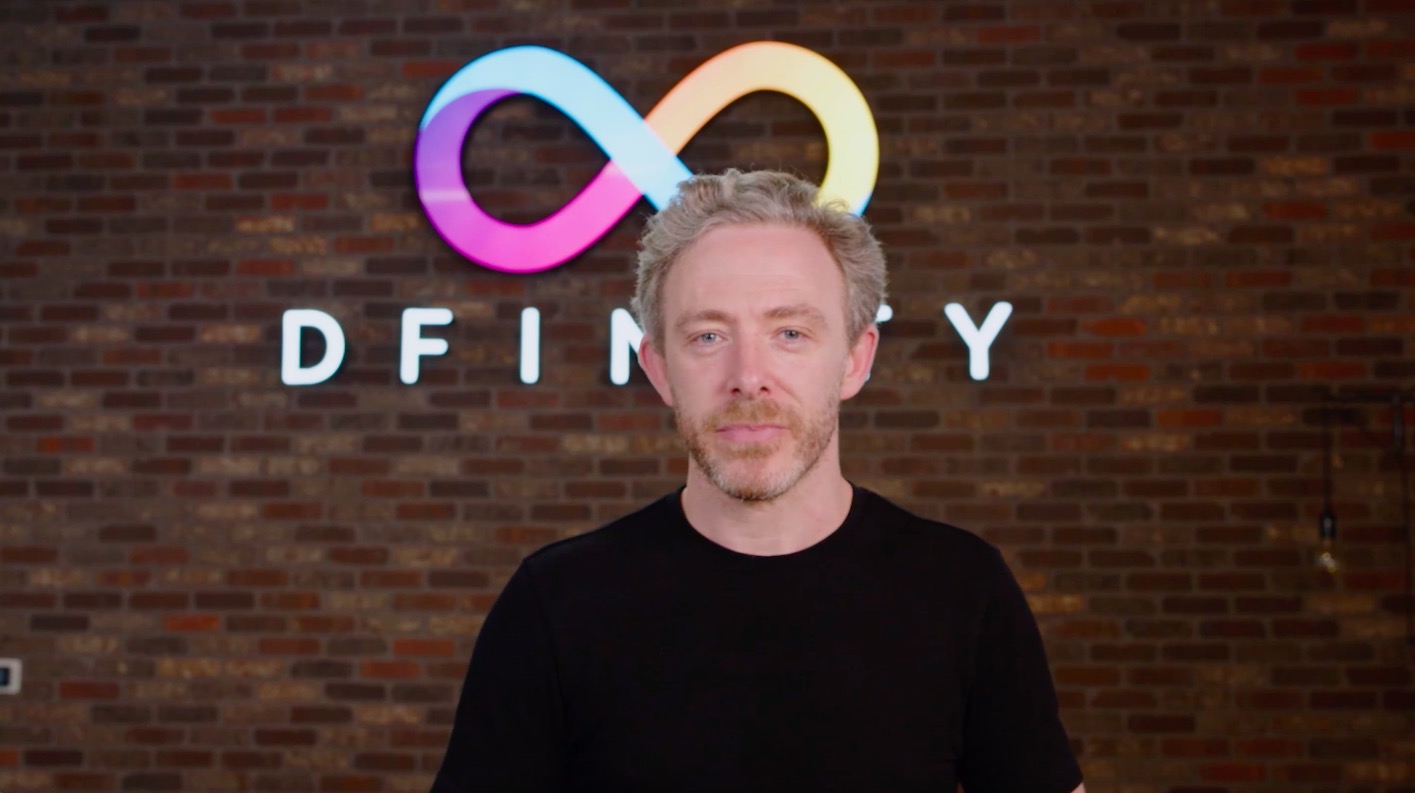
With the maturity of DFINITY, a blockchain-based Internet computer was born. DFINITY is not just a public chain project, but a more complete Internet service based on blockchain, which is a huge innovation no less than Ethereum and Bitcoin.
With the maturity of DFINITY, a blockchain-based Internet computer was born. DFINITY is not just a public chain project, but a more complete Internet service based on blockchain, which is a huge innovation no less than Ethereum and Bitcoin.
In order to welcome this historic moment in the industry, DFINITY, together with 36 Krypton and Odaily, held the "DFINITY Internet Computer Mainnet Launch Conference" at 20:00 on May 8. We discussed technology and Applications, opportunities and challenges, business and ecology.
first level title
The following is the specific speech content of Dominic, organized by Odaily
Hello everyone, see you again. In this talk we will discuss the token economics of the internet computer blockchain. The Internet computer network will have a governance token called ICP. ICP can be used for network governance and distribution of network rewards. It can also be used as a raw material for cycles to indirectly participate in network computing.

ICP has a variety of values, and there is another token cycle in the Internet computer network, whose function is to provide fuel for calculations (Note: the gas token in the DFINITY network). There will be 469,213,710 ICP tokens in the creation stage of the Internet computer. The circulation supply of tokens depends on the market dynamics, but there will be about 26%. No cycles will be issued in the creation stage, so you need to use ICP to create cycles.
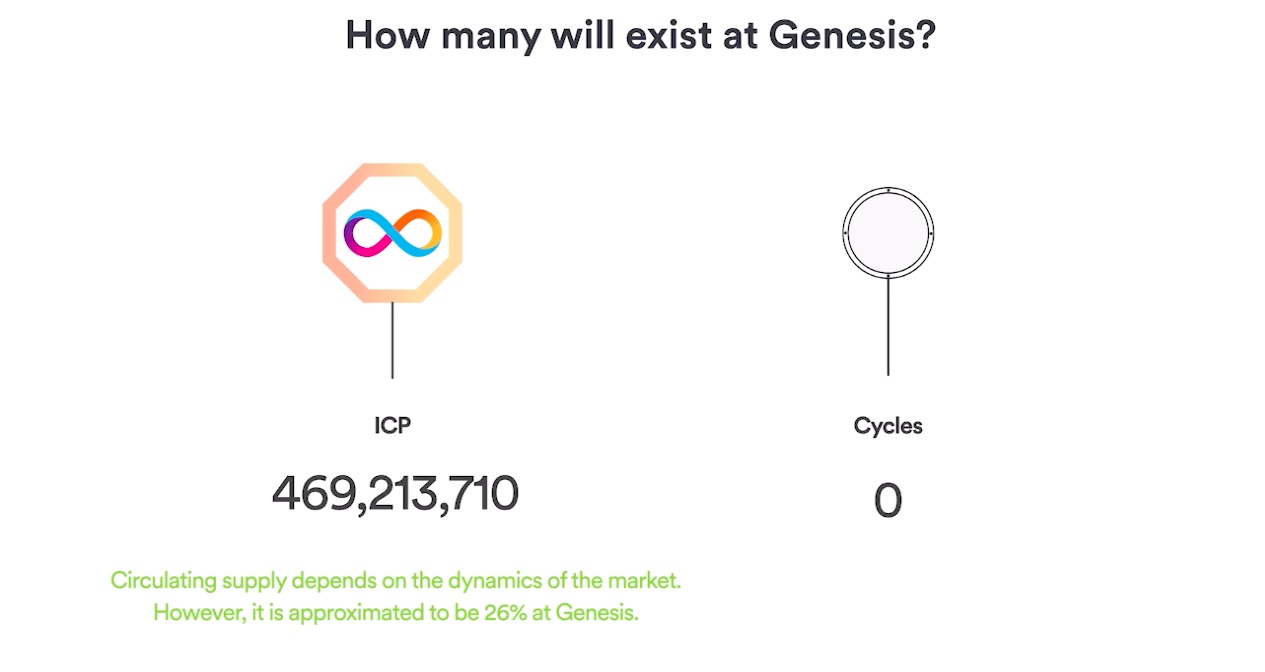
How will new ICP tokens be minted? The Network Nervous System (NNS) of the Internet Computer mints new ICP tokens to reward network participants. ICP will be distributed to neuron operators as voting rewards and to node operators as node rewards.
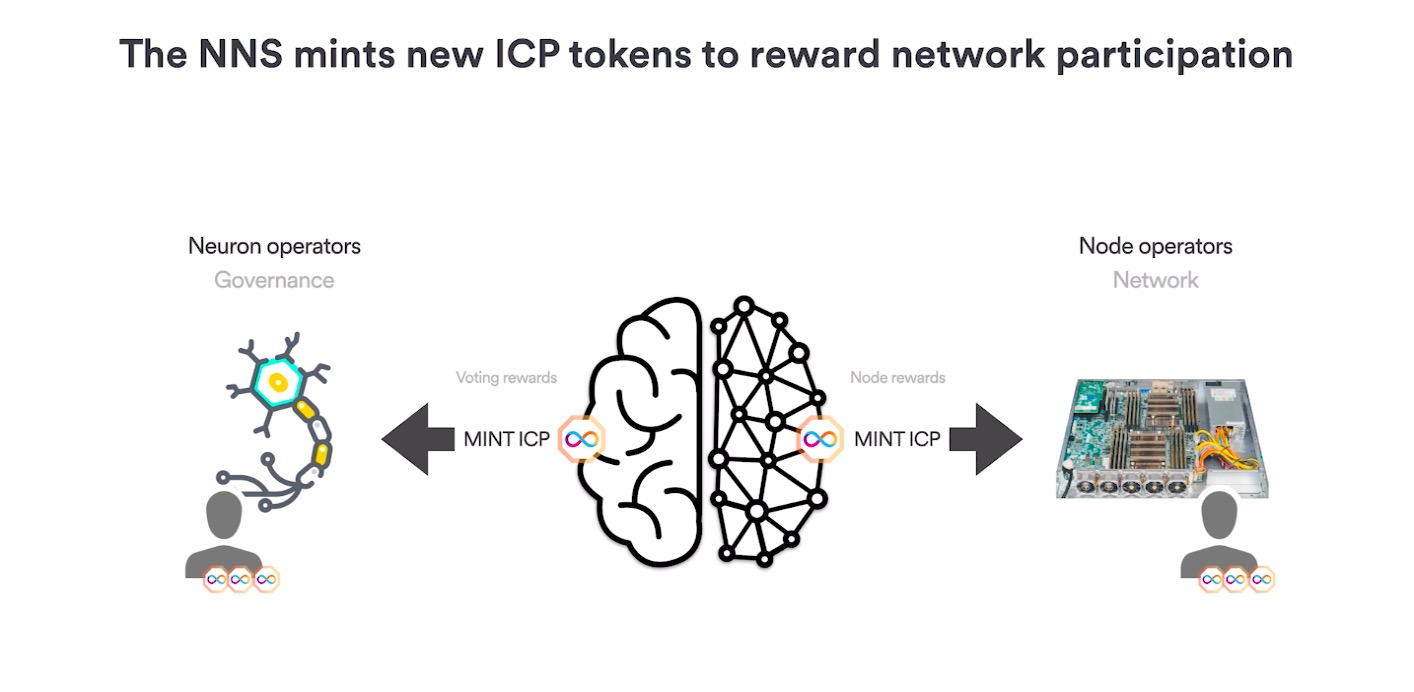
Every day, NNS will distribute ICP to each neuron according to a certain ratio. The specific distribution amount will be equal to 10% of the ICP supply divided by the number of days in a year. Eight years later, that number drops to 5%.

At the same time, normally operating nodes will receive a cash reward equivalent to the amount of ICP payable, because node operators have fixed costs, such as hosting fees and hardware depreciation costs. Nodes simply divide the monthly payment by the ICP price to determine the amount of ICP due.
Now that we know how ICP was created, how are ICP tokens used? ICP is consumed as it is converted into cycles, which can be used by the network's nervous system to power computations. The ICP is equivalent to the Special Drawing Right (SDR) defined by the International Monetary Fund (IMF), whose value is exactly equal to 1 trillion cycles.
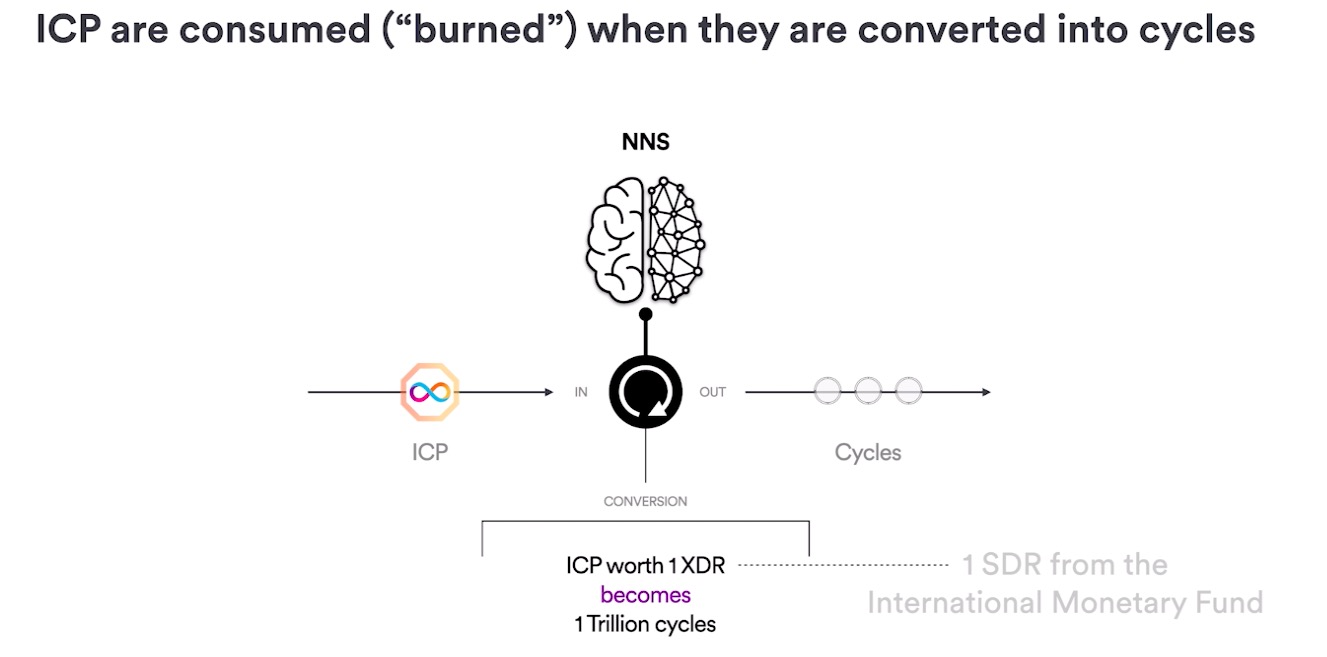 ICP is indirectly powering network computing, Canister smart contracts must be prepaid with cycles, and when cycles are used to power computing, they are consumed and burned. Therefore, those who want to call smart contracts directly or indirectly must hold ICP tokens and convert them into cycles, and eventually cycles are destroyed through calculation. The more computations performed on the network, the higher the demand for ICP tokens.
ICP is indirectly powering network computing, Canister smart contracts must be prepaid with cycles, and when cycles are used to power computing, they are consumed and burned. Therefore, those who want to call smart contracts directly or indirectly must hold ICP tokens and convert them into cycles, and eventually cycles are destroyed through calculation. The more computations performed on the network, the higher the demand for ICP tokens.

ICP will also indirectly empower DeFi, and DeFi needs a more stable value store. For example, if Alice lends Bob 100 ICP, agreeing to repay it within one year, and then during that year the value of the ICP increases, Bob must repay Alice more than he expected.
In a book called "The Denationalization of Money", Nobel laureate Frederick Hayek pointed out that money plays the role of a unit of account, a medium of exchange, and is better when its value is stable .
The network nervous system will always set the exchange rate of ICP worth 1 SDR as 1 trillion cycles, and SDR is composed of US dollars, euros, renminbi, yen, pounds, etc., so this exchange rate is linked to the value of the global economy.
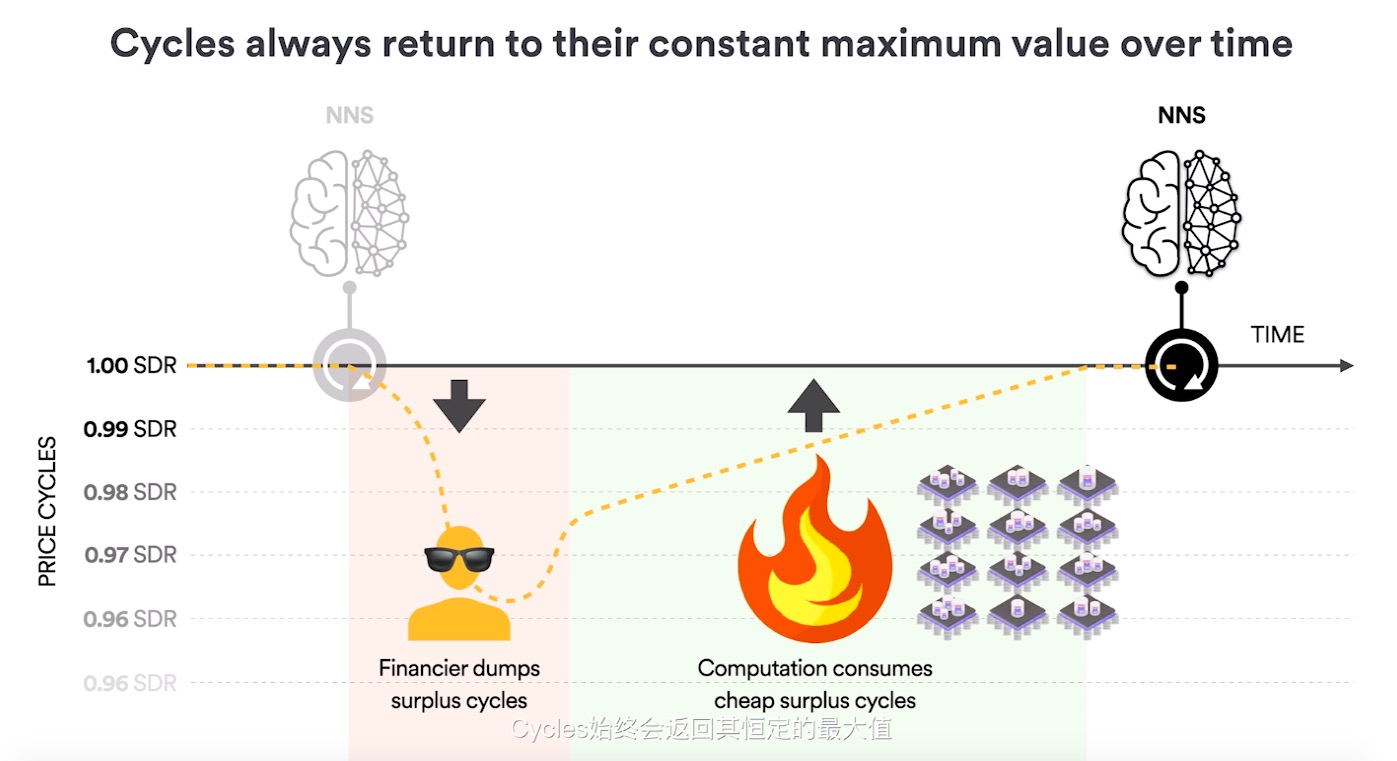
At the same time, cycles always return to their constant maximum value over time. Take the above picture as an example, time goes from left to right, first the network nervous system will determine the exchange price of ICP and cycles; then a financier who has accumulated surplus cycles starts to sell them, naturally the price of cycles will start to fall, because the surplus The selling price of cycles will generally be lower than the exchange price determined by the network nervous system; since these surplus cycles are cheaper, they will be purchased by those who want to fuel their calculations; these cheaper surplus cycles are thus bought and By destroying, eventually exhausted. Over time, the price of cycles will return to the level determined by the network's nervous system.
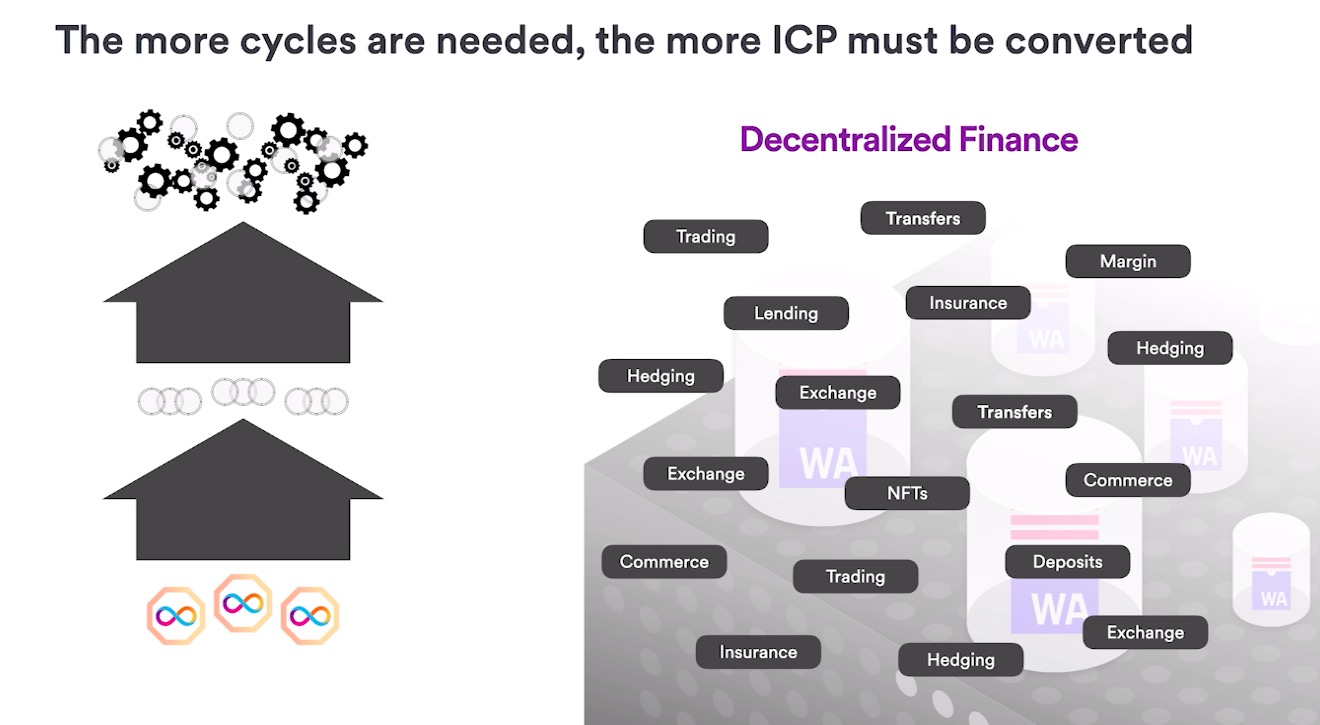
This is the first time a blockchain has used computation to create tokens with constant value. Of course, the greater the amount of computation performed on the Internet computer network, the more effective it will be in pushing the price of cycles back to the desired value. The more cycles DeFi needs, the more ICPs must be converted.
Finally, ICP can also participate in network governance through staking. Users can do this by staking ICP in the network system, which will create new voting neurons. The voting reward a voting neuron can get depends on the amount of ICP it has locked. Every day, a fixed neuron reward (newly issued ICP) is distributed among all voting neurons.
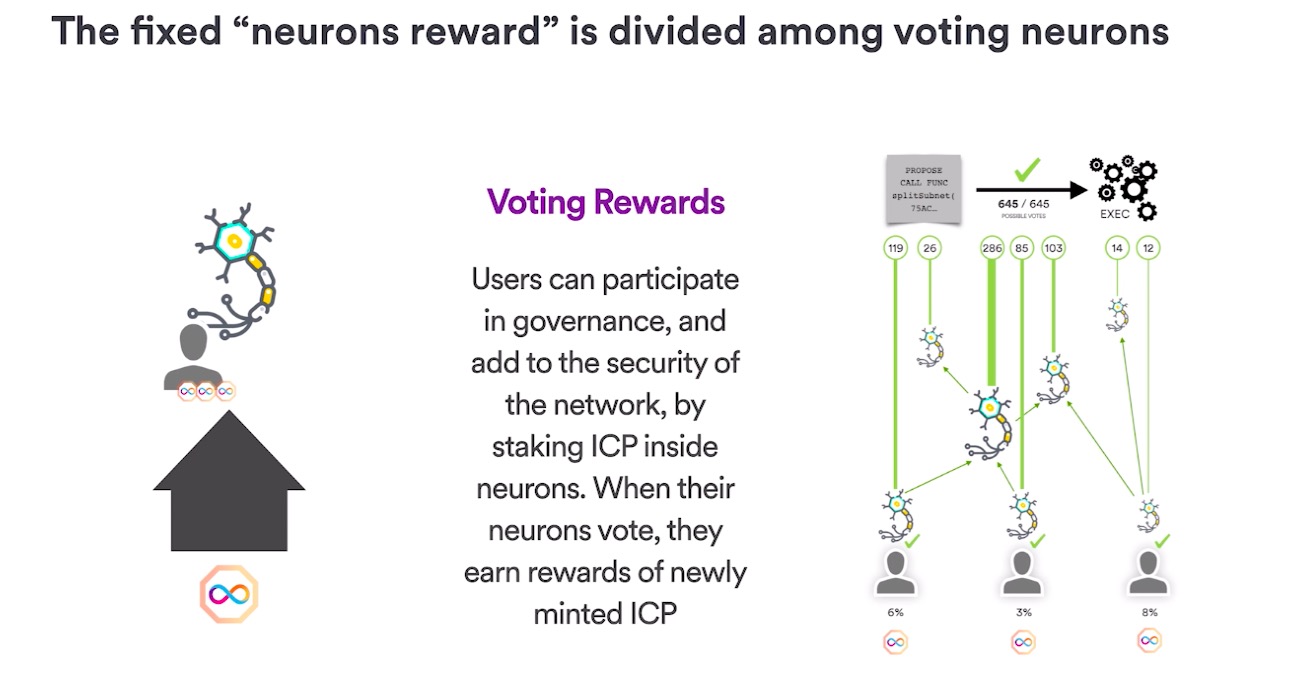 In this way, Internet Computer will allow all users who hold ICP to participate in network governance and obtain corresponding pledge rewards, while improving network security.
In this way, Internet Computer will allow all users who hold ICP to participate in network governance and obtain corresponding pledge rewards, while improving network security.
Alright, so those are the three main uses of ICP. Thank you for listening.